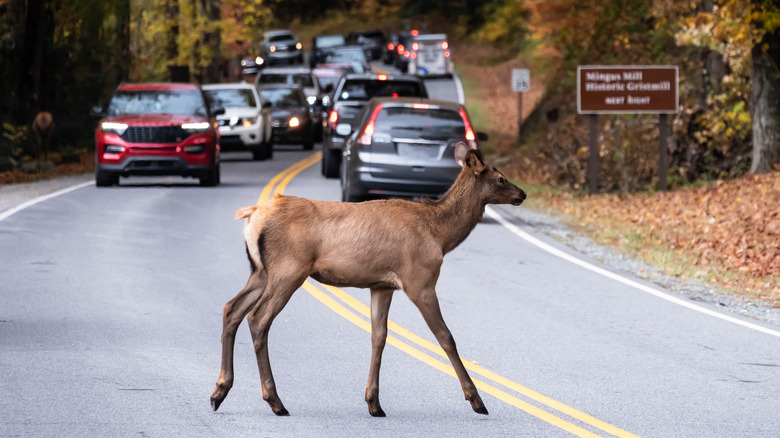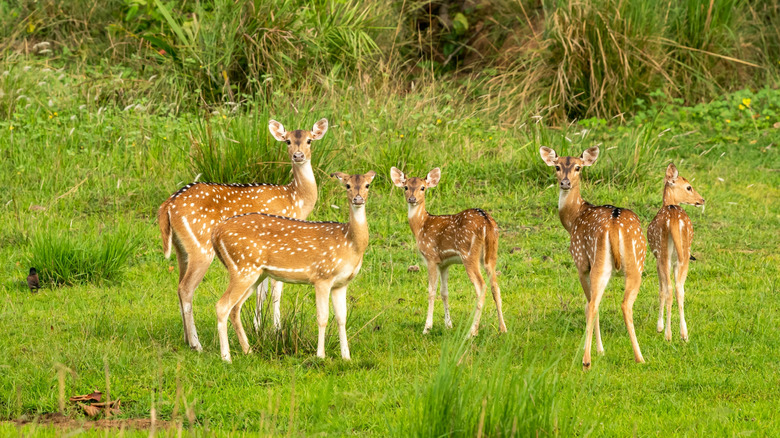The Secret To Avoid Hitting A Deer Or Elk On Your Next Road Trip
A deer appears in your headlights. A delicate doe, trotting shyly across the road. The head turns toward you; the deer freezes. You swallow down panic and pump the brakes, but you keep heading straight; the deer backs away, toward the grassy edge of the highway. You pass, exhaling with relief. The deer is alive. Your car is undamaged. Your pulse starts to return to normal.
But don't relax just yet. This is the moment when drivers should be most vigilant — because deer tend to travel in groups. As the saying goes: "If you see one, there are probably more." Missing the first deer can lull you into a false sense of security; these social animals may cross in stages, and there's no telling what a deer will do when a car is barreling down on it. Sprint? Backtrack? Stay where it is? Instincts in the moment are impossible to predict.
The presence of deer — and their cousins, the elk — is always a possibility on U.S. roads, especially at night. You may do everything right; you've taken every precaution before your road trip. You've avoided the most dangerous mistakes you can make on the road. You've observed the "Deer Xing" sign and kept your eyes on the road. Still, your drive can feel like a game of roulette. At any moment, one of these skittish mammals could wander into traffic, and a collision could be disastrous — for everyone involved.
What to do if you collide with a deer
Hitting a deer is far more common than many people realize, especially in the United States. Each year, about 2.1 million car crashes involve deer, resulting in 440 human deaths and 59,000 injuries, according to a 2022 study published in the journal Current Biology. This comes at a mind-boggling financial cost of $10 billion.
When you spot a deer, the best tactic is to slow down and use "defensive driving" strategies. Keep an eye out for a second deer or a whole herd. If you're driving after dark, this is exactly the scenario that high beams were designed for. You can also use your horn to scare a deer into motion. Most importantly, don't swerve; experts advise drivers to maintain their course, as this reduces the chances of losing control or hitting another car.
So what if none of this works, and you hit a deer anyway? First, put your car in a safe place — most likely the shoulder — and switch on your emergency lights. Even if you feel physically fine, call 911 immediately and report the incident, then wait for police or emergency vehicles. Critically, you should not approach the deer or elk; these animals often survive the crash, and they can thrash threateningly as you approach. Wait until the scene is secure, then document the damage as best you can and call your insurance company to describe what happened. Extreme cold may complicate this process; here's what to do if you're stuck in your car during a winter road trip.

